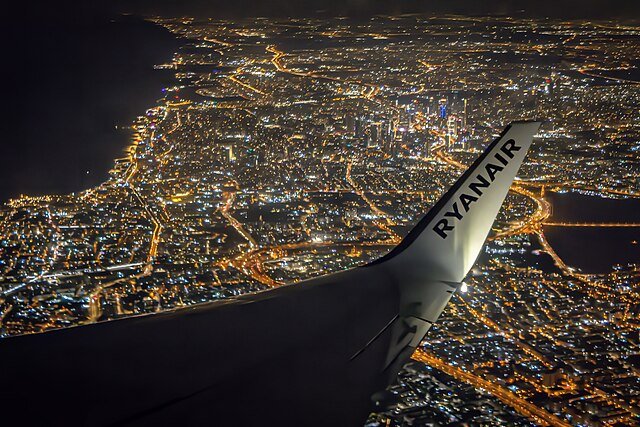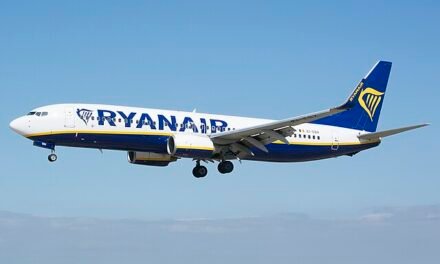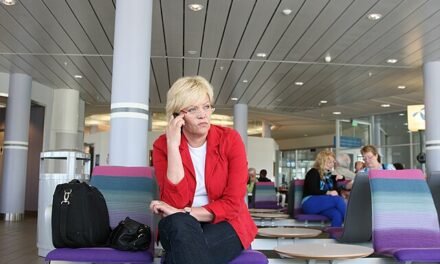The skies over southern Germany turned chaotic on June 4, 2025, when Ryanair flight FR8 from Berlin to Milan hit a storm so fierce it felt like the plane might tear apart. For the 179 passengers and six crew members aboard, what started as a routine evening flight became a heart-pounding ordeal, with violent turbulence injuring nine people, including a toddler, and forcing an emergency landing in Memmingen, Bavaria. As the dust settles, the fear, relief, and resilience of those onboard tell a story of human strength in the face of nature’s fury.
Around 8:30 p.m., the Boeing 737-800 lurched through a thunderstorm’s wrath, tossing passengers like ragdolls. A mother, clutching her two-year-old, was in the restroom when the plane jolted, leaving her toddler bruised and her own head bloodied. A 59-year-old woman gripped her seat, her back aching from the sudden drops. One passenger, a Berlin teacher named Anna, later shared, “I thought we were done for. The plane shook so hard, I held my daughter’s hand and just prayed.” Eight passengers and one crew member were hurt, three needing hospital care in Memmingen for injuries like head wounds and bruises, while others were treated on-site.
The pilot, acting swiftly, diverted to Memmingen Airport, 70 miles west of Munich, landing safely as emergency crews waited. “It was terrifying, but that landing felt like a miracle,” said Marco, a Milan chef returning home. Passengers, shaken and some in tears, stayed on the plane for hours, nerves frayed but grateful to be on solid ground. Authorities grounded the aircraft, citing safety concerns, and Ryanair arranged buses to ferry passengers 236 miles to Milan, a weary journey after a night of fear. A replacement flight followed the next morning.
For families waiting in Milan, the wait was agonizing. Sofia, whose husband was onboard, said, “I kept checking my phone, heart racing, until he called from the bus. He sounded so shaken.” The crew, too, felt the strain. A flight attendant, her hands trembling post-landing, confided to a passenger, “I’ve never felt anything like that. We just wanted everyone safe.” Ryanair apologized, noting the captain’s quick call for medical help and their efforts to get passengers to Milan swiftly, but for those onboard, the memory lingers.
The storm wasn’t just a problem for the flight. Southern Germany faced chaos, with winds tearing roofs off homes in Ulm and flooding basements across the region. Weather experts warned of more storms, with hail and gusts expected into Thursday. Some passengers, like Anna, felt the airline could’ve warned them sooner about seatbelts, saying, “It hit so fast, we weren’t ready.” Others, like Marco, defended the crew: “They did their best in a nightmare. I’m just glad we’re okay.”
This wasn’t a lone incident—turbulence has rocked flights worldwide, from a United Express jet in Texas to a Stockholm-Miami route last year. But for these passengers, it was personal. A Munich student, Lena, onboard with her sister, said, “We held each other so tight. It’s made me rethink every flight.” The economic ripple is real, too—Memmingen’s small airport, already stretched, saw its staff stretched thin, while Milan’s tourism industry felt the delay’s sting.
As investigations into the storm’s intensity continue, passengers are piecing their lives back together. The mother with the bruised toddler, now recovering, whispered to a nurse, “We’re here, that’s what matters.” Ryanair’s quick response—buses, a new flight—eased some frustration, but the emotional scars remain. In Berlin, a grandfather who waved his family off said, “I’ll hug them tighter next time.” For now, the skies may calm, but for those on flight FR8, the memory of that stormy night will linger, a reminder of how fragile a journey can be and how precious it is to land safely.




















